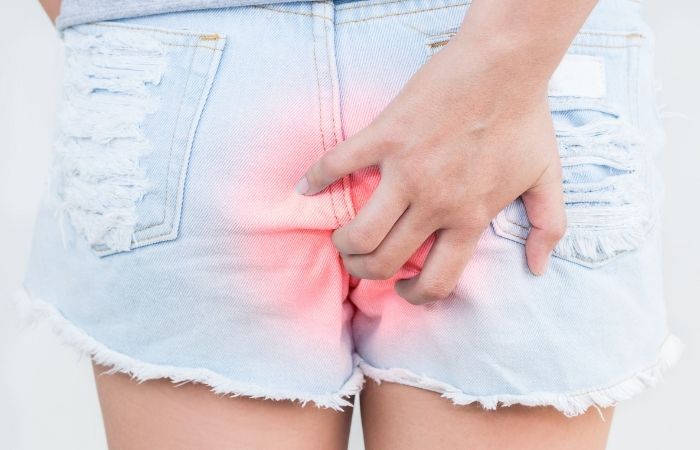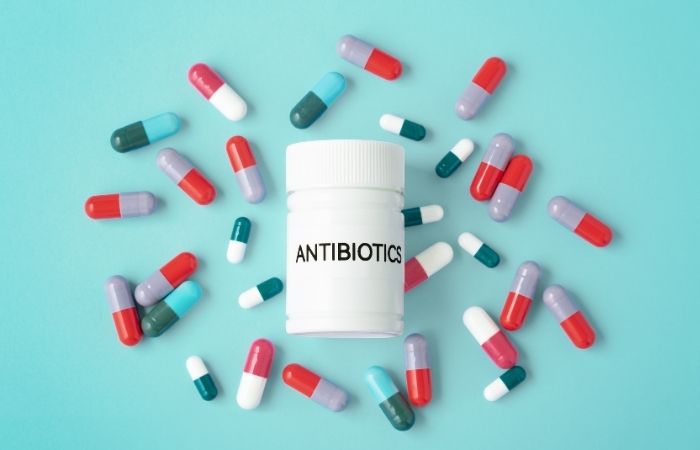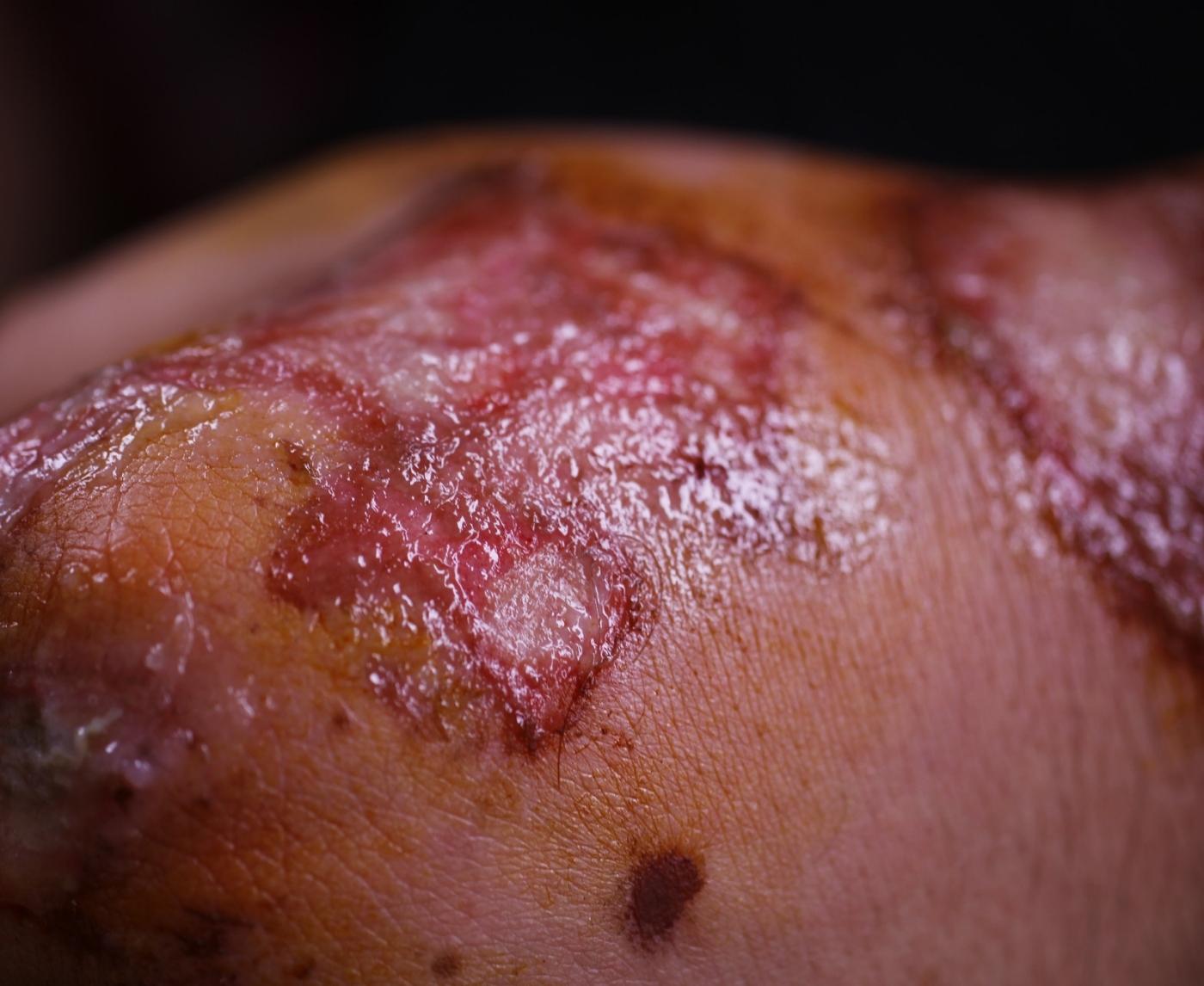No Symptoms, No Problem? Why You Still Might Need an STD Test
Quick Answer: Donovanosis is a rare bacterial STD that causes progressive, beefy-red genital ulcers. Cases are increasing in parts of the U.S. and Australia due to travel, missed diagnoses, and lack of testing access. It is treatable with antibiotics.
“Flesh-Eating STD?” Here’s What It Actually Looks Like
The first time Ty, 35, noticed the lesion, he was in Darwin. “I didn’t even feel it,” he said. “It was just… red. Moist. Kind of raw-looking.” That’s how donovanosis usually starts: a small, painless bump or sore that slowly becomes ulcerated. It doesn’t burn like herpes. It doesn’t look clean like syphilis. Instead, the lesion grows, bleeds when touched, and takes on a “beefy red” appearance that can spread to surrounding skin.
The bacteria behind it, Klebsiella granulomatis, invades the skin and subcutaneous tissues, triggering chronic inflammation and tissue damage. While it's often called a “flesh-eating” STD in headlines, that label is misleading. The bacteria don’t literally eat flesh, it’s the chronic infection and poor immune response that lead to tissue breakdown. Still, untreated lesions can become disfiguring, spreading to the thighs, perineum, groin, even the pelvic wall.
According to the CDC and WHO, donovanosis primarily affects the skin and mucosa of the genitals, perianal region, and occasionally the mouth. Lesions are slow to heal without treatment and may become secondarily infected. The damage isn’t just physical, delayed diagnosis can increase the risk of transmission and fuel community spread.

People are also reading: Why So Many Women Aren’t Believed About STD Symptoms
Why Donovanosis Is Creeping Back
In the 1950s, the U.S. recorded more than 10,000 donovanosis cases annually. By 2015, that number had dropped below 100. Australia saw similar progress, especially in Northern Indigenous communities where donovanosis once accounted for up to 10% of all STI diagnoses. But eradication never truly happened, it just faded from view.
Now, reports from both countries show an upward tick. A 2023 U.S. case series documented a small but persistent rise, with most patients misdiagnosed initially as having herpes or syphilis. In Queensland and the Northern Territory, public health departments confirmed that the infection still exists in remote communities, often among those with limited access to STI testing and culturally competent care.
So what’s driving the resurgence?
- Travel and sexual networks: Donovanosis remains endemic in parts of Papua New Guinea, India, South Africa, and the Caribbean. Increased mobility between those areas and Australia or the U.S. increases exposure risk.
- Diagnostic gaps: Most clinicians in high-income countries have never seen donovanosis. It’s rarely taught in medical school and often confused with more common STIs. This means patients are either misdiagnosed or dismissed entirely.
- Shame and delayed testing: People with genital ulcers often feel embarrassed. If the sore doesn’t hurt, they wait, and by the time they seek care, the lesion is larger, more infectious, and harder to treat.
How It Spreads, and What Makes It Different
Donovanosis is transmitted through skin-to-skin contact during vaginal, anal, or oral sex. There’s no evidence it spreads via surfaces or casual contact. What makes it unique is the incubation period, anywhere from 1 to 12 weeks, and the fact that ulcers often develop without fever, discharge, or pain.
Unlike gonorrhea or chlamydia, there’s no urine test for donovanosis. Diagnosis requires visual inspection and a microscope, specifically, staining lesion samples and looking for Donovan bodies inside white blood cells. In low-resource settings, this step is often skipped or unavailable, leading to “best guess” treatments that may not target the actual infection.
And here’s the catch: because donovanosis ulcers bleed easily, they can act as a gateway for HIV or syphilis. A 2021 review in the Journal of Infectious Diseases noted that genital ulcer diseases increase HIV transmission risk by 2- to 5-fold. That’s why early diagnosis isn’t just about cosmetic recovery, it’s public health protection.
Table 1. Ulcer-causing STDs: pain profile, bleeding tendency, healing speed, and diagnostic pitfalls. Donovanosis is the only major STD with painless, beefy-red lesions that bleed easily on contact.
Myths That Delay Diagnosis, and Why They’re Dangerous
“You can’t get an STD if you use condoms.” “Only people in developing countries get donovanosis.” “It must be herpes because it’s on the genitals.”
These are the phrases that echo in emergency rooms, Reddit threads, and WhatsApp group chats. And they all do harm. Donovanosis, like most STDs, thrives on misinformation. Its rarity has become its cloak, people, and sometimes even clinicians, dismiss it as too unlikely to consider.
That’s exactly what happened to Malik, 31, a U.S. military contractor who returned from South Africa with what he thought was a minor rash. Two urgent care visits and one unnecessary antifungal cream later, his lesion had doubled in size. It wasn’t until he saw a tropical medicine specialist that he was diagnosed correctly and began a 3-week course of azithromycin.
Myth-busting isn’t just academic, it’s a frontline defense. According to NIH guidelines, donovanosis is often misdiagnosed as chancroid, herpes, or even skin cancer. The treatment pathways are completely different. Misdiagnosis means delayed recovery, and higher transmission risk.
In a 2023 Australian health bulletin, the government emphasized the urgent need for increased provider awareness, especially among general practitioners in rural areas. Stigma, particularly in Indigenous communities, has also been cited as a barrier to timely diagnosis. This is why sex education must go beyond “the usual suspects.” We cannot fight what we refuse to name.
What Treatment Looks Like (and How Long It Takes)
The good news? Donovanosis responds well to antibiotics, if caught early. The gold standard is azithromycin, taken either as 500mg daily or 1g weekly until the lesions are fully healed. Most cases resolve in 3 to 6 weeks, depending on lesion severity and immune status. For people who are pregnant, HIV-positive, or allergic to azithromycin, options like doxycycline, erythromycin, and ciprofloxacin are used with similar results.
But here’s what most treatment guides won’t tell you: the emotional recovery takes longer than the physical one. Scarring is possible. People often feel embarrassed about having a “rare STD.” That shame keeps them from telling partners, following up with providers, or getting retested after treatment.
This is where compassionate care makes a difference. A provider who says, “This doesn’t define you. We’ve got a plan,” can shift a person from fear to agency. And once treatment begins, healing is usually rapid. Lesions stop bleeding within days, and visible improvements are seen by week two. By week four, many are lesion-free.
Testing after treatment isn’t mandatory, but it’s encouraged, especially if symptoms return. The CDC recommends follow-up if ulcers persist beyond 30 days or if new lesions appear. Partner notification is also crucial, since donovanosis can smolder for weeks before symptoms arise.
Want to test from home? While there’s no current FDA-cleared at-home test for donovanosis, you can rule out other common STDs, like syphilis, gonorrhea, and herpes, using a Combo STD Home Test Kit. If those come back negative and symptoms persist, that’s your cue to bring up donovanosis with your provider directly.
When Testing Isn’t Enough, You Need Advocacy
Jamie, 22, spent six months bouncing between urgent cares before someone finally biopsied her ulcer.
“They kept saying it was eczema, maybe a yeast thing,” she said. “I started feeling like I was the crazy one.”
That gaslighting isn’t rare, especially when symptoms are “atypical” or when the patient doesn’t match the assumed risk profile.
For LGBTQ+ patients, patients of color, and Indigenous populations, the burden of proving something is wrong can feel immense. Donovanosis doesn’t care who you sleep with, but the medical system sometimes does.
This is why it’s okay to say: “I’ve read about donovanosis, and I think this might be it.” You’re not being dramatic. You’re being responsible. You can also request a referral to an infectious disease specialist or a sexual health clinic. In many major cities, these clinics have access to testing techniques like Giemsa staining and trained staff who won’t write off your symptoms as stress or hygiene.
And if you’re in a rural or remote area? Some clinics offer telehealth consults with infectious disease experts who can walk your provider through testing protocols. You’re not alone, even if you feel like it.
Table 2. Common antibiotics used to treat donovanosis. Treatment continues until full healing, usually 3 weeks or longer. Choice depends on allergies, pregnancy, and drug availability.

People are also reading: Doctors Said It Was Nothing, Turns Out It Was Herpes
This Is What Prevention Actually Looks Like
Let’s be honest: most people don’t even know donovanosis exists, let alone how to prevent it. That doesn’t mean prevention isn’t possible, it just means the messaging has to get better. Donovanosis spreads via unprotected skin-to-skin contact. That includes vaginal, anal, and oral sex. Barriers like condoms and dental dams reduce but don’t entirely eliminate risk, especially if sores are outside the area covered.
But prevention isn’t just about condoms. It’s about early recognition and care-seeking. It’s about understanding that a painless lesion isn’t automatically “safe.” It’s about knowing your own anatomy well enough to say, “This wasn’t here last week.”
Prevention also looks like testing regularly, especially if you have new or multiple partners, travel internationally, or experience STI symptoms, even mild ones. While there’s no rapid test for donovanosis itself, testing for everything else creates a clearer clinical picture. If your herpes, syphilis, and chlamydia results are negative but a sore is still present, that’s when providers can start considering less common causes like donovanosis.
In Australia, the national STI guidelines explicitly recommend testing for donovanosis when ulcerative lesions don’t respond to first-line herpes or syphilis treatment. In the U.S., most sexual health clinics can consult with infectious disease experts or send samples to specialty labs. You don’t need to be in a tropical country to advocate for comprehensive care, you just need to be willing to speak up.
Donovanosis vs Other Ulcer-Causing STDs
Table 2. Common STDs that cause genital ulcers. Only donovanosis causes painless, bleeding sores that expand over time—often leading to misdiagnosis.
FAQs
1. Is it really “flesh-eating”?
Kind of , but not the zombie-movie kind. Donovanosis causes sores that slowly expand and bleed easily, but the bacteria aren’t munching on skin like a horror flick. It’s tissue damage from unchecked infection, not literal flesh consumption. Still serious, but not sensational.
2. What does a donovanosis sore actually look like?
Think: raw hamburger meets sunburn. Painless at first, moist, and reddish , it can start small and grow over weeks. One person described it as “a wet scab that wouldn’t quit.” If you’ve got something weird going on down there and it’s not behaving like herpes or a zit, it’s worth checking.
3. Can I get it from oral sex?
Yes, it’s possible. While most cases come from genital or anal contact, there are documented infections in the mouth and throat , especially when oral sex involves open sores or bleeding gums. Use barriers. Ask questions. No shame in playing safe.
4. Will a regular STD test catch it?
Unfortunately, nope. There’s no swab or urine test for donovanosis like there is for chlamydia or gonorrhea. Diagnosis usually requires a provider to look at tissue under a microscope. That’s why ruling out the usual suspects first helps narrow it down.
5. How long does it take to show up?
Anywhere from 1 to 12 weeks after exposure. That’s a long window. Some folks notice a sore after a couple of weeks; others might not see anything for months. The key? Don’t ignore a red spot just because it doesn’t hurt.
6. Does it go away on its own?
Not likely. In fact, it usually gets worse without treatment. The sore can get bigger, spread to nearby areas, and even leave scars. The sooner you get antibiotics, the faster you heal , and the less likely you’ll pass it to someone else.
7. Can I still have sex if I’m being treated?
Short answer? Wait. It’s safest to hold off until your lesions are fully healed and your doctor says you’re in the clear. It’s not about punishment , it’s about giving your body time to heal and keeping your partners protected.
8. I told my doctor, and they’d never heard of it. What now?
First: you’re not crazy, and you’re not alone. Donovanosis is rare in most Western clinics. Bring up the CDC’s treatment guidelines or Australia’s STI manual. Or ask to see a specialist , infectious disease clinics and sexual health centers are often more familiar.
9. Is it deadly?
No , but it can do real damage if ignored. The sores can grow large, interfere with urination or sex, and even increase your risk of HIV. It's not a death sentence, but it deserves your attention.
10. Why haven’t I heard of this before?
Honestly? Because public health messaging often leaves out anything rare, messy, or stigmatized. Donovanosis mostly affects people in underserved areas, and that makes it invisible in mainstream sex ed. But silence doesn’t equal safety , knowing about it is your power-up.
You Deserve Answers, Not Assumptions
This isn't a horror movie. It’s your body, your health, and your right to know what’s going on. Donovanosis is rare, but it’s real. And it’s showing up in places where clinicians don’t always know to look. That doesn’t mean you’re dirty. It doesn’t mean you’re reckless. It means you’re navigating a system that still hides STDs behind shame and stigma.
But here’s what’s more powerful than fear: information. Treatment exists. Recovery is possible. You can prevent long-term damage, reduce transmission, and reclaim your peace of mind, starting with one clear decision to get tested or seek care.
Don’t let a doctor’s hesitation become your delay. Don’t let a red bump become a buried secret. You deserve a diagnosis. You deserve healing. You deserve the truth, even if that truth is something most people still haven’t heard of.
If you're experiencing unusual genital symptoms and want to rule out more common causes, this at-home combo test kit screens for the most common STDs discreetly and quickly. It's one step closer to clarity.
How We Sourced This Article: We combined peer-reviewed clinical studies, CDC and WHO guidelines, Australian STI manuals, and lived case reports to present a grounded, human-centered guide to donovanosis. Around 15 sources informed this article, but we’ve listed the six most authoritative and accessible below. All external links were verified as active and reputable at the time of publication.
Sources
CDC STD Treatment Guidelines: Donovanosis
Donovanosis: Case Series of a Rare Entity in the United States
Australian STI Management Guidelines: Donovanosis
NIH: Granuloma Inguinale (Donovanosis)
NSW Health: Donovanosis Fact Sheet
Donovanosis and HIV Risk: Clinical Review
About the Author
Dr. F. David, MD is a board-certified infectious disease specialist focused on STI prevention, diagnosis, and treatment. He blends clinical precision with a no-nonsense, sex-positive approach and is committed to expanding access for readers in both urban and off-grid settings.
Reviewed by: Dr. L. Martinez, MPH | Last medically reviewed: September 2025
This article is for informational purposes and does not replace medical advice.






